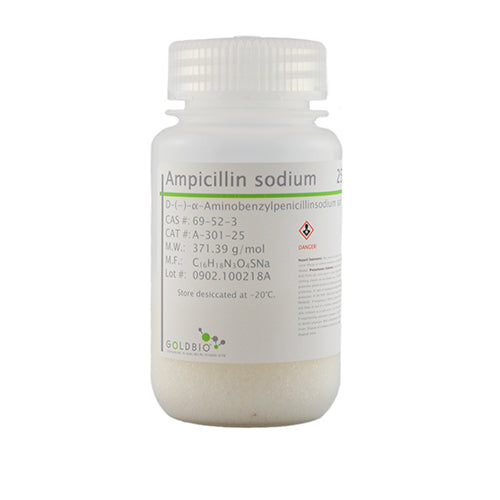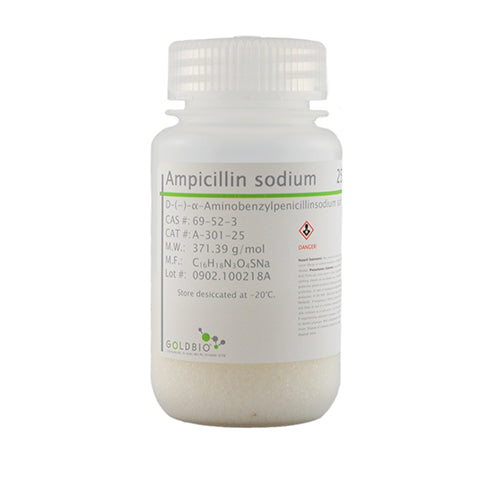Description
Ampicillin sodium is a member of the extended-spectrum β-lactam family and similar in structure to penicillin. It is used in the selection of antibiotic cell hybrids and has a high rate of action against many gram-negative bacterial strains. Ampicillin sodium targets non-ESBL (Extended Spectrum β-lactamase) bacteria including Staphylococcus and Streptococcus species and medically important enteric pathogens such as Shigella and Salmonella. It has been found to be effective against certain β-lactam sensitive VRE or vancomycin resistant Enterococcus species. Resistance to ampicillin is routinely utilized as a selectable marker to confirm successful cell transformation. Ampicillin Sodium is freely soluble in water.
β-lactams inhibit the formation of peptidoglycan cross-links within bacterial cell walls by targeting penicillin-binding proteins or PBPs. Consequently, the bacterial cell wall becomes weak and cytolysis occurs. Resistance to β-lactam antibiotics occurs in the presence of cells containing plasmid encoded extended spectrum β-lactamases or ESBLs.
Antibiotics are often used in clinical in vitro tests known as antimicrobial susceptibility tests or ASTs to determine their efficacy against certain bacterial species. They are tested against gram-negative and gram-positive bacteria using panels, discs, and MIC strips by medical microbiologists. ASTs decrease the risk of using an antibiotic against bacteria exhibiting resistance to it, and the results are used in clinical settings to determine which antibiotic(s) to prescribe for various infections
Details
| CAS NUMBER | |
| CHEMICAL GRADE | |
| EXTERNAL URL | Click here |
| SYNONYMS | |
| UNSPSC CODE |





